Filipino lullabies are not uniform and vary by region. The Visayan lullaby "Ili, Ili, Tulog Anay" is distinct from "Katurog na, Nonoy" from the Bicol region, and "Wiyawi" from the Kalinga region. These regional variations reflect the unique cultural practices and environments of each area.
Regional lullabies often convey themes of love, longing, and loss. For example, "Ili, Ili, Tulog Anay" expresses a mother's love and longing for her child to sleep, while "Katurog na, Nonoy" conveys a sense of reassurance and comfort. These lullabies serve as important tools for cultural preservation and education****, transmitting values and fostering a sense of identity.
The soothing melodies of these lullabies offer comfort and security, while enriching a child's development. By singing these lullabies, parents and caregivers pass on cultural values and traditions to the next generation, enriching their understanding of Filipino culture****.
A Cradle of Melodies
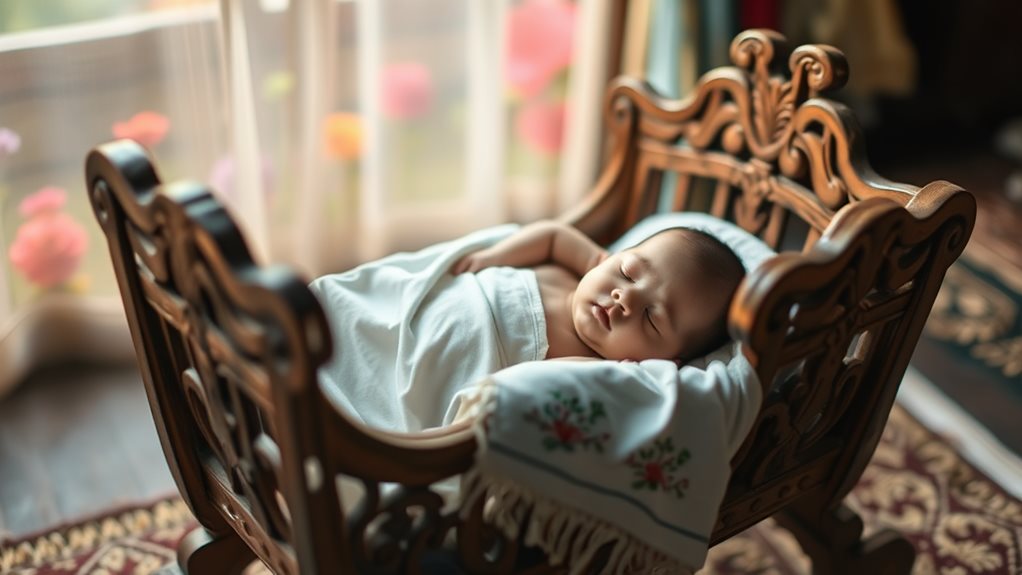
Four distinct examples of Filipino lullabies showcase regional diversity**. These lullabies include "Katurog na, Nonoy" (Bicolano), "Wiyawi" (Kalinga), "Ili, Ili, Tulog Anay" (Visayan), and "Aba-aba" (Southern Mindanao). Each lullaby reflects unique cultural practices and environments, highlighting the diversity of melodic storytelling**.
"Katurog na, Nonoy" depicts a child's yearning for sleep****. This common theme is woven into melodic storytelling, and its publication in various formats highlights its enduring appeal.
The lullaby's widespread publication contributes to lullaby evolution****.
"Wiyawi" uses melodic storytelling to describe a traditional Cordilleran home****. This Kalinga lullaby showcases the warmth and comfort of babywearing.
Dr. Felicidad Prudente's transcription preserves this tradition, highlighting the importance of ethnomusicological research in documenting lullaby evolution.
"Ili, Ili, Tulog Anay" offers a glimpse into daily family life**. This Visayan lullaby highlights the mother's absence** and the child's need for comfort.
Its publication in "Folk Songs: Songs of the Visayas" cemented its place in the study of lullaby evolution.
Tagalog Lullabies
Tagalog lullabies are an essential part of the Philippines' musical heritage, characterized by their evocative melodies and poignant lyrics. They deeply reflect familial bonds and cultural identity**. The history of Tagalog lullabies** is rich and complex, encompassing both traditional forms and more contemporary interpretations.
These lullabies often reflect profound emotions, exploring themes of love, loss, and nostalgia. For example, the song "Sa Ugoy ng Duyan" by Lucio San Pedro and Levi Celerio masterfully captures the genre's artistic heights**. The musical arrangements vary widely, from intimate solo performances to full orchestral renditions. Their enduring appeal lies in their ability to evoke powerful memories and emotions**.
Tagalog lullabies often capture the essence of everyday life. For instance, the song "Hele" reflects the simple joys and struggles of families. These lullabies have also been adapted in films and documentaries, enhancing their cultural reach and impact. Furthermore, their presence in educational settings highlights their significance in transmitting cultural values and promoting musical appreciation.
Tagalog lullabies aren't static; they adapt and evolve. Regional variations, field recordings, and collaborative efforts underline a continuous process of preservation and innovation****. Their performance across various regions demonstrates their enduring appeal and adaptive nature.
Bicolano Lullabies
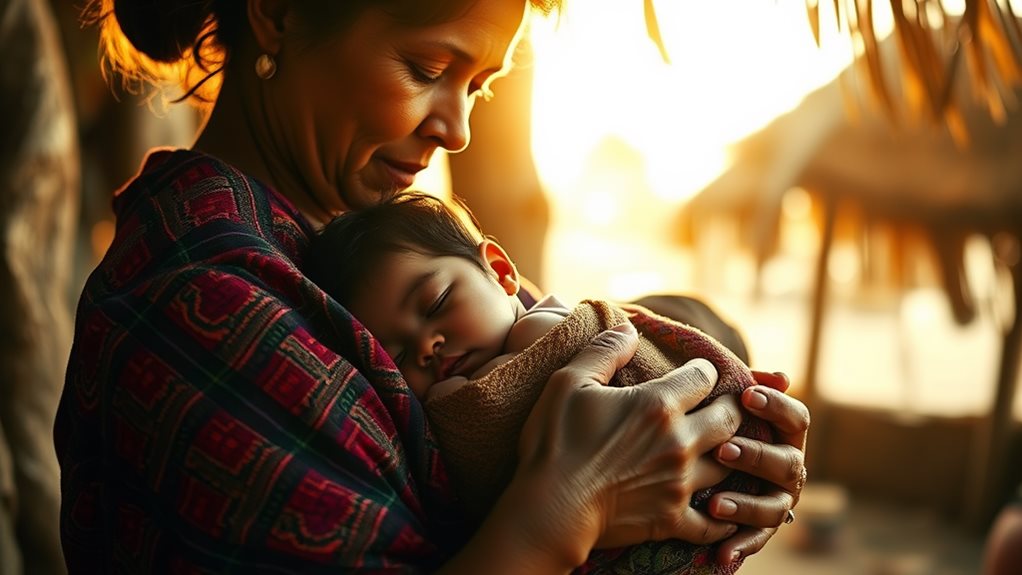
Bicolano Lullabies Reflect the Region's Unique Cultural Heritage****
Bicolano lullabies are an essential part of the Bicol Region's musical traditions. They blend Spanish, American, and indigenous influences, reflecting the region's geography and climate. For example, the lullaby *Katurog na, Nonoy* is specifically designed to lull children to sleep, while *Lubi-Lubi* includes Bicolano verses, often used as educational tools.
Musical Structure and Instrumentation
The musical structure of Bicolano lullabies is typically simple and free-flowing, aligning with the region's broader folk song tradition. The melodies are gentle and rhythmic, designed to calm. Many versions incorporate Bicolano musical instruments, such as the *kubing* (jaw harp) or *rondalla* (ensemble), adding another layer of cultural depth.
Lyrics and Preservation
The lyrics of Bicolano lullabies often weave narratives, moral lessons, and geographical references, reflecting daily life and community struggles. They are preserved and promoted through modern arrangements and digital platforms, such as Spotify. Collections like "Himig Himbing: Mga Heleng Atin" make these lullabies accessible to a wider audience.
Modern adaptations, along with accompanying music videos and documentaries, expand their reach and impact.
Insight into Bicolano Culture
Through these lullabies, we gain insight into the nurturing aspects of Bicolano culture. Familial love and strong community bonds are highlighted, showcasing the importance of family and community in Bicolano society.
Kalinga Lullabies
The Significance of Kalinga Lullabies****
Kalinga lullabies are an essential part of the region's cultural heritage, offering a glimpse into the daily lives and traditions of its people. Typically sung by caretakers, often Cordilleran fathers, these lullabies serve as a form of cultural storytelling. Research by Dr. Felicidad Prudente and Kalinga expert Benicio Sokkong provides valuable insights into these songs.
The Rich Tapestry of Kalinga Lullabies
Kalinga lullabies are a diverse collection of sounds and meanings. They can be categorized into different types, each serving a distinct purpose.
For example:
- Wiyawi: This lullaby references warm weather or traditional babywearing. Phrases like "Adi ka pay manibi, Ebananta mapudot Wiyawiyawi ebi" are commonly used.
- Salidumay: Although lacking a direct translation, this phrase offers a unique glimpse into Kalinga celebrations.
- Mambayu: Sung while pounding rice, this lullaby imitates the rhythmic sounds of labor, connecting the song to daily life.
Preserving Kalinga Lullabies
The Cultural Center of the Philippines' (CCP) *Himig Himbing* project highlights the importance of Kalinga lullabies. A music video for "Wiyawi," featuring Bullet Dumas, is available on the CCP Facebook page.
This project showcases the lullabies' continuing relevance and their contribution to language preservation and cultural education.
Kalinga lullabies provide young parents with a fresh collection of indigenous songs, making them a vital element of the Philippines' rich cultural heritage.
Southern Mindanao Lullabies
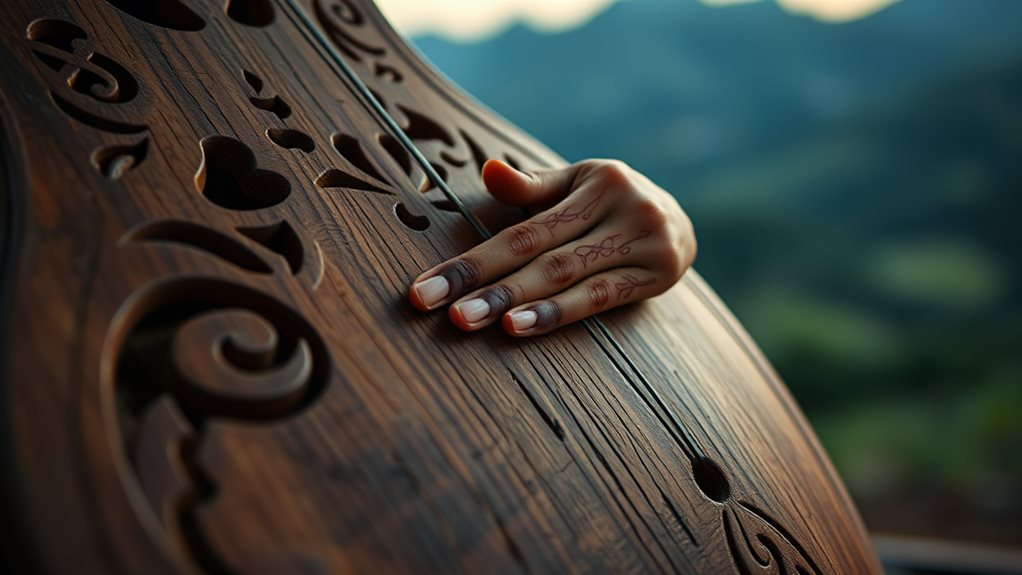
Southern Mindanao's indigenous lullabies are a rich tapestry of diverse musical traditions. These lullabies are documented through field recordings available at the UP Center for Ethnomusicology, which provides crucial archival access to this cultural heritage. For example, Subanon lullabies, such as the Aba-aba, can be found in these field recordings, showcasing the cultural significance that remains strong even in modern interpretations.
The musical characteristics of these lullabies vary as much as the ethnic groups themselves. The Yakans use chant styles, while others incorporate kudyapi rhythms and kulintang melodies. Additionally, the use of pentatonic scales and bamboo instruments reflects ancient influences and the region's resources.
These lullabies aren't isolated but are woven into everyday life, reflecting women's roles in the community and shared traditions across different ethnic groups.
Documentaries, such as those by Jose Buenconsejo, showcase these musical traditions through field research funded by the National Research Council of the Philippines. These documentaries provide crucial archival materials and highlight the educational value of preserving these lullabies.
The importance of these lullabies extends beyond preservation, offering a window into the cultural and economic activities that form the backdrop for these songs.
Visayan Lullabies
Visayan lullabies are a vital part of the Philippines' cultural heritage, reflecting the region's history and traditions. They originated in the central Philippines, specifically in the Visayas region****. These lullabies are typically sung in various Visayan dialects, such as Hiligaynon, and have simple melodies that are easy to learn and hum.
The themes of Visayan lullabies often revolve around family life and separation. This is evident in the poignant atmosphere created by the lyrics, which frequently address parental absence. For example, the famous lullaby "Ili, Ili, Tulog Anay" conveys a sense of longing and comfort, highlighting the emotional connections between family members.
Visayan lullabies play a significant role in preserving cultural heritage. They serve as powerful tools for community bonding, fostering a sense of shared identity and preserving cultural practices. The emotional connections forged through these lullabies are deeply rooted in the Visayan cultural landscape.
Another example, "Pinalangga Ko," illustrates the diverse emotional range of these lullabies and their ability to bring people together.
Key aspects of Visayan lullabies include their regional origin, language, themes, and role in preserving cultural heritage. By analyzing these factors, we can better understand the significance of Visayan lullabies and their impact on the community.
These lullabies have been documented in various forms, ensuring their continued relevance in a changing world.
Ilocano and Bohol Lullabies
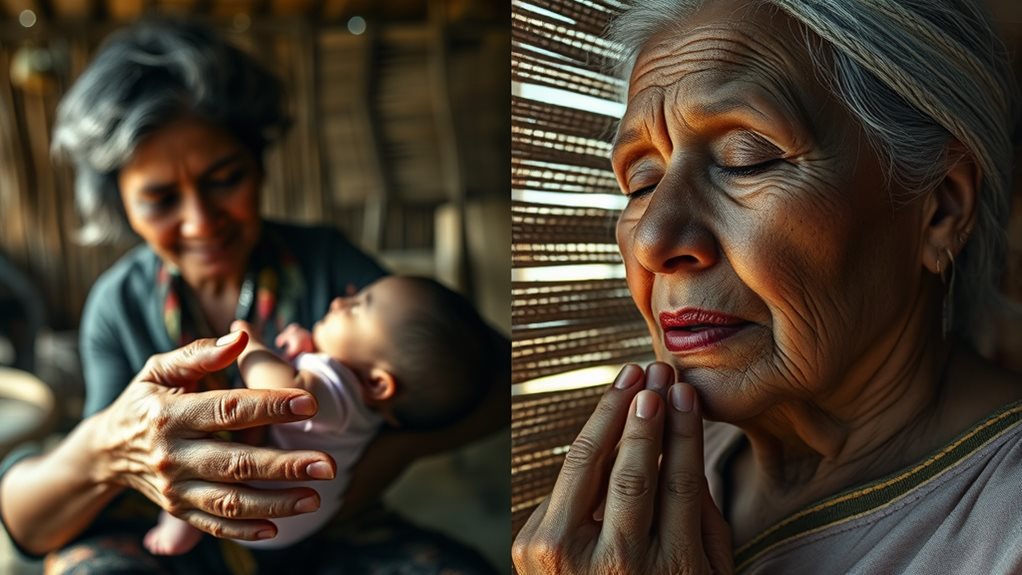
Ilocano Lullabies: A Rich Musical Heritage
Ilocano lullabies, or *duwayya*, are a significant part of Filipino musical heritage. These lullabies are often brief, consisting of four quatrains, and feature mild, tender melodies to express parental love****. They're sung by various caregivers and reflect Ilocano themes, using local dialect in a conversational manner.
For example, "Dungdungwen Kanto," or "Lullaby of Love," is a *duwayya* that emphasizes tender care. Another example, "Maturog, Duduayya," encourages sleep and obedience, using local imagery to create a soothing atmosphere.
Boholano Lullabies: A Need for Further Research****
In contrast to Ilocano *duwayya*, Boholano lullabies are scarce and poorly documented. While specific examples are lacking, it's likely that Boholano lullabies reflect local traditions and cultural values****. This assumption is based on the fact that lullabies in other parts of the Philippines often mirror the everyday life and cultural values of their respective regions.
The absence of readily available information on Boholano lullabies highlights the need for further research and documentation. This research will help uncover the hidden musical heritage of Bohol and contribute to a better understanding of the diversity of Filipino lullabies.
Cultural Preservation
Cultural preservation of Filipino lullabies is essential for safeguarding cultural heritage. These traditional practices hold immense cultural significance, acting as a vibrant thread connecting generations. Their importance extends beyond simple entertainment, as they're vital for preserving cultural knowledge and values.
Documentation and education are key components in preserving Filipino lullabies. Supporting initiatives that document and archive regional lullabies is crucial. For instance, the Philippine National Library and the Cultural Center of the Philippines have taken steps to document and archive traditional Filipino lullabies.
Additionally, integrating these songs into family routines and school curricula can help transmit cultural values to future generations.
Collaboration and creative reinterpretation can ensure the longevity of Filipino lullabies. Encouraging schools to include Filipino lullabies in their curricula and promoting collaborations between artists and researchers can help create modern interpretations of these traditional songs.
For example, a project that combines traditional Filipino lullabies with contemporary music styles can make these songs more accessible and appealing to a wider audience.
Preserving Filipino lullabies is crucial for maintaining cultural identity. The scarcity of traditional Filipino lullabies in modern education underscores the urgency of preserving these songs.
By actively supporting their preservation, individuals can play a significant role in ensuring the continuation of this rich cultural legacy.
Preserving Filipino lullabies isn't just about safeguarding music; it's about preserving a crucial aspect of Filipino cultural identity and traditional practices.
Educational Lullabies
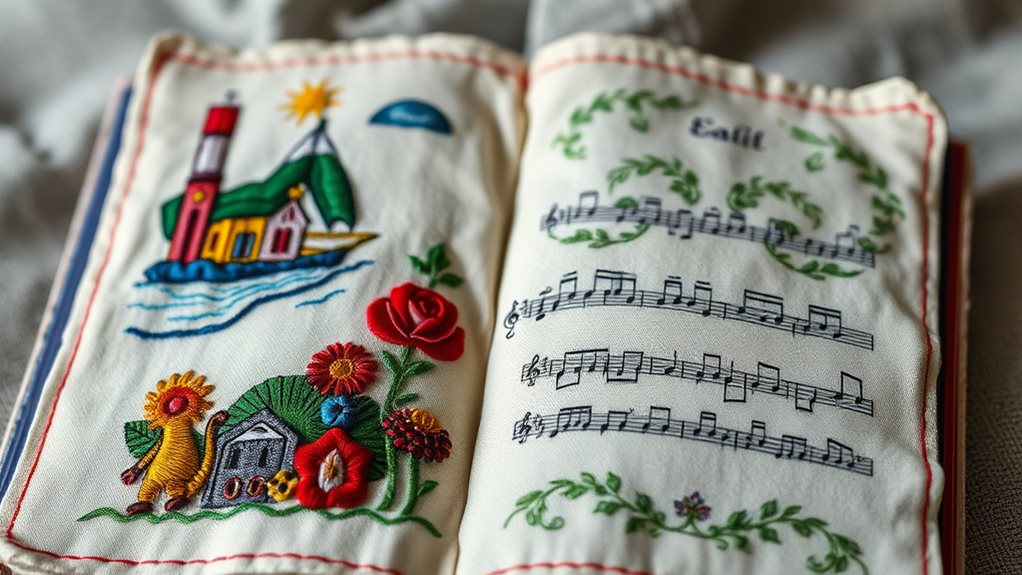
Filipino Lullabies Offer Educational Benefits: Filipino lullabies aren't just soothing sounds but also valuable educational tools that enrich a child's development in diverse ways. They expose infants to indigenous languages, fostering linguistic diversity and strengthening cultural identity. For instance, lullabies in Ilocano, Cebuano, or Tagalog help develop speech and language skills, encouraging the use of native tongues.
Cultural Education and Emotional Intelligence**: Through lyrics and melodies, Filipino lullabies provide a cultural education by introducing regional customs and the rich history of various ethnic groups. They convey love and protection, reinforcing familial bonding** and a sense of security. This nurturing of emotional intelligence is particularly evident in lullabies that emphasize the importance of family and community.
Appreciation for Musical Diversity and Local Folklore****: These songs also foster an appreciation for musical diversity and local folklore. For example, the lullaby "Hulog ng Langit" showcases the musical traditions of the Ilocano region, while "Dandansoy" highlights the folk music of the Visayas. By exposing children to different musical styles and genres, Filipino lullabies become a bridge between generations, transmitting cultural knowledge and values.
Artistic Expression and Critical Thinking**: Filipino lullabies offer opportunities for artistic expression** and creative adaptations. By incorporating them into music and arts education, children can develop critical thinking skills through the analysis of lyrics and melodies.
For example, studying the lyrics of "Malinak Lay Labi" can help children understand the cultural significance of the song and its historical context.
Soothing Sounds
Filipino lullabies have a unique ability to calm and comfort infants, which can be attributed to several key elements.
One key element is gentle and repetitive melodies. These melodies create a sense of predictability and security for the infant. For example, the lullaby "Sa Ugoy ng Duyan" features a slow and simple melody that helps soothe the baby.
Another element is consistent rhythmic patterns. These patterns often mimic the gentle rocking motion associated with soothing a baby. The lullaby "Wiyawi" is a great example of this, with its rhythmic sway that complements the melodic components.
Repetitive lyrics also play a crucial role in calming the baby. The repetitive nature of the lyrics creates a hypnotic effect, helping the baby drift off to sleep. "Ili, Ili, Tulog Anay" is a great example of this, with its Repetitive lyrics that create a soothing atmosphere.
The cultural context of the lullabies is also important. The cultural significance embedded within the lyrics adds an emotional depth, fostering a sense of connection and belonging. "Tingkatulog" is a great example of this, with its lyrics that reflect the cultural values and traditions of the Philippines.

Filipino lullabies are a vital part of the country's shared cultural heritage. These songs represent a connection between generations through music and storytelling, shaping cultural identity and strengthening familial bonds. They're sung in various indigenous languages, showcasing regional diversity and reinforcing national unity.
Lullabies are powerful tools for transmitting values, stories, and traditions. Each song carries the weight of history and cultural heritage. For example, "Sa Ugoy ng Duyan" (in Tagalog) and "Wiyawi" (in Kalinga) are two lullabies that have been passed down through generations. They build a bridge between parents and children, creating strong familial bonds through shared experience and emotional connection.
Filipino lullabies often teach about daily life and introduce children to aspects of the culture. "Bahay Kubo" is a lullaby that depicts rural living and emphasizes the importance of family. This song helps to create a sense of cultural identity and belonging among children.
Preserving these lullabies is crucial for safeguarding Filipino cultural identity. Projects like "Himig Himbing" document and reintroduce these lullabies, ensuring their survival in a rapidly changing world.
Questions and Answers
How Are Lullabies Passed Down Through Generations?
Lullabies are passed down through generations through oral tradition. This method of preservation allows the songs to be shared and learned by family members and communities, ensuring their continued existence. For example, a grandmother may sing a traditional lullaby to her grandchild, who then learns and sings the same song to their own children in the future. This oral tradition fosters cultural preservation and emotional bonding between generations.
What Instruments Are Typically Used in Lullabies?
Instruments commonly found in lullabies include the guitar, bamboo flute, and traditional percussion instruments.
These instruments are frequently used due to their soothing and calming qualities, which help create a peaceful atmosphere for the child. For example, gentle guitar melodies can produce a sense of serenity, while the soft sounds of the bamboo flute can create a calming ambiance. Similarly, traditional percussion instruments, such as soft drums or chimes, can add a sense of rhythm and structure to the lullaby.
Do Lullabies Influence a Child's Language Development?
Lullabies significantly impact language development in children. Research has shown that singing lullabies to children enhances their cognitive abilities and strengthens emotional bonding between the child and caregiver. This, in turn, fosters language acquisition and comprehension.
The cognitive benefits of lullabies can be attributed to their rhythmic patterns and repetitive melodies, which make it easier for children to recognize and mimic sounds and words. For example, lullabies often feature repeated phrases or refrains, allowing children to anticipate and predict the next word or phrase. This repetition helps children develop phonological awareness and vocabulary skills.
Furthermore, the emotional bonding that occurs during lullaby singing also plays a crucial role in language development. When caregivers sing to their children, it creates a sense of security and trust, making children more receptive to learning and communicating. As a result, children who are exposed to lullabies tend to have better language skills and a stronger foundation for future language development.
Are There Lullabies Specific to Certain Family Events?
Some lullabies are tied to family celebrations and hold cultural significance.
Examples of these event-specific lullabies include traditional wedding lullabies, where the bride is lulled to sleep on her wedding night, and lullabies sung during baby showers to welcome a newborn.
Not all lullabies are specifically linked to particular events. However, these lullabies still carry deep cultural meaning and are often passed down through generations as a way to connect with heritage and tradition.
How Have Modern Influences Impacted Lullabies?
Modern influences have significantly impacted the way lullabies are shared and experienced. One notable example is the rise of cultural adaptations through music videos and online platforms. For instance, traditional lullabies are now being reimagined and performed in various genres, such as pop and hip-hop, and shared on social media sites like YouTube and TikTok.
Technological advancements have also played a crucial role in the dissemination of lullabies. With the availability of digital recordings, lullabies can now be easily accessed and shared across different regions and cultures. This has led to a wider exposure of traditional lullabies and the creation of new, modern adaptations.